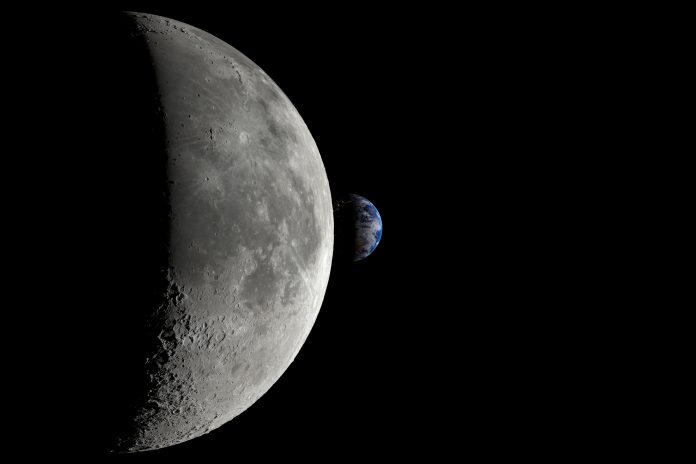By examining minuscule lunar crystals brought back by the Apollo 17 astronauts in 1972, scientists have reevaluated the age of the Moon and revealed they may have been 40 million years off
While earlier estimations had estimated the Moon’s age at 4.425 billion years, the recent study revealed that it is, in fact, 4.46 billion years old, making it 40 million years older than previously believed.
Conducted by a team of researchers from the Field Museum and the University of Glasgow, this study was made possible through Northwestern University’s atom-probe tomography facility, which precisely determined the age of the oldest crystal within the lunar sample.
The researchers successfully reconstructed the chronology of the Moon’s formulation by unveiling the age of these distinctive Zircon crystals concealed in lunar dust.
“This study is a testament to immense technological progress we have made since 1972 when the last manned Moon mission returned to Earth,” said Northwestern’s Dieter Isheim, who co-authored the study.
“These samples were brought to Earth half a century ago, but only today do we have the necessary tools to perform microanalysis at the requisite level, including atom-probe tomography.”
Lunar age determination: Tracking the age of the moon
The atom-by-atom analysis allowed scientists to quantify the extent of the atomic decay within the zircon crystals. When an atom experiences decay, it releases protons and neutrons, transforming into different elements. Uranium, for example, decays into lead.
Since researchers have determined the rate at which this transformation occurs, they can determine the age of a sample by examining the ratio of uranium to lead atoms.
Over 4 Billion years ago, during the early stages of the solar system’s development, the Earth was still formulating, an object about the size of Mars collided with Earth.
This collision resulted in a collision hunk breaking off Earth and forming the Moon. The intense energy generated from the collision melted the rock that would later solidify into the Moon’s surface.
“So, any crystals on the Moon’s surface must have formed after this lunar magma ocean cooled. Otherwise, they would have been melted, and their chemical signatures would be erased.”
Because the crystals must have formed after the magma ocean cooled, determining the zircon crystals’ age would reveal the Moon’s minimum possible age. To pinpoint the maximum possible age of the Moon, scientists used xNorthwestern’s atom-probe tomography equipment.
Atom-Probe tomography process
In atom-probe tomography, the initial step involves sharpening a section of the lunar sample into an exceptionally fine tip. This is achieved with a focused ion beam microscope, resembling an advanced pencil sharpener.
UV lasers are used to vaporise atoms from the tip surface. These atoms travel through a mass spectrometer, and their velocity provides insights into their weight, revealing their elemental composition.
After identifying materials within the sample and applying radiometric dating techniques, the research team concluded that most ancient crystals have an approximate age of 4.46 billion years. These findings imply that the Moon must be at least as old as this.











